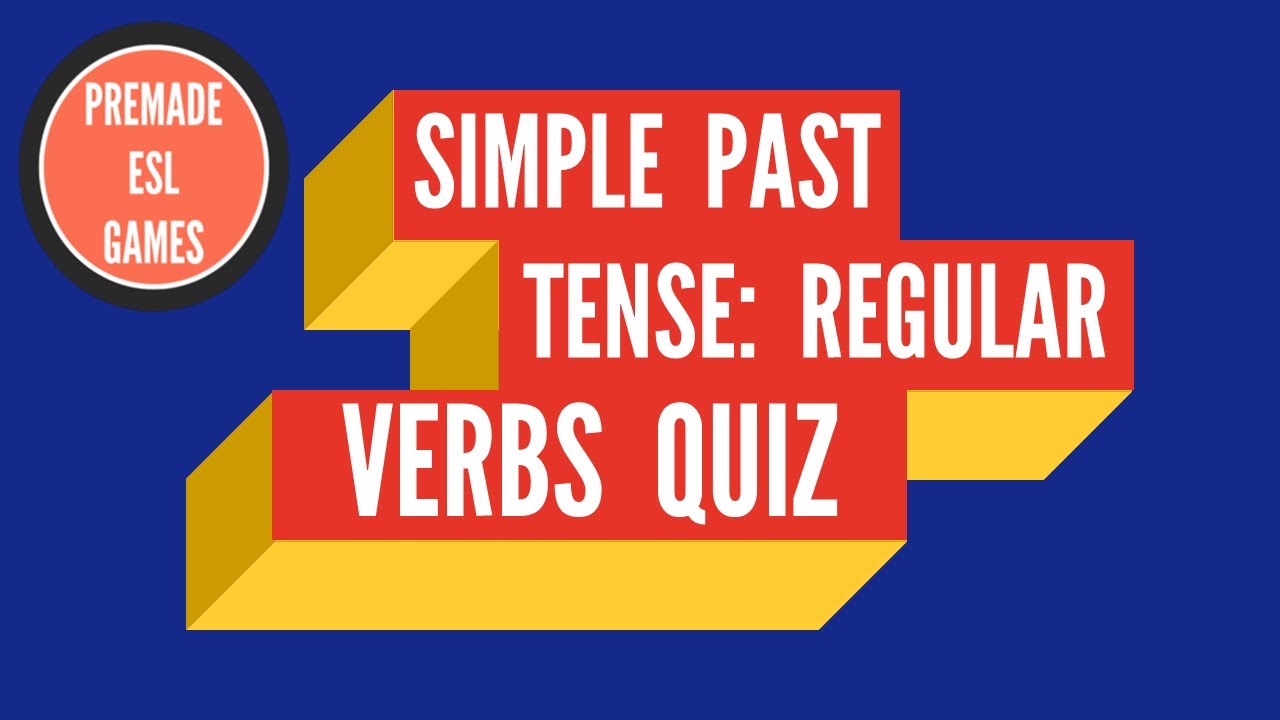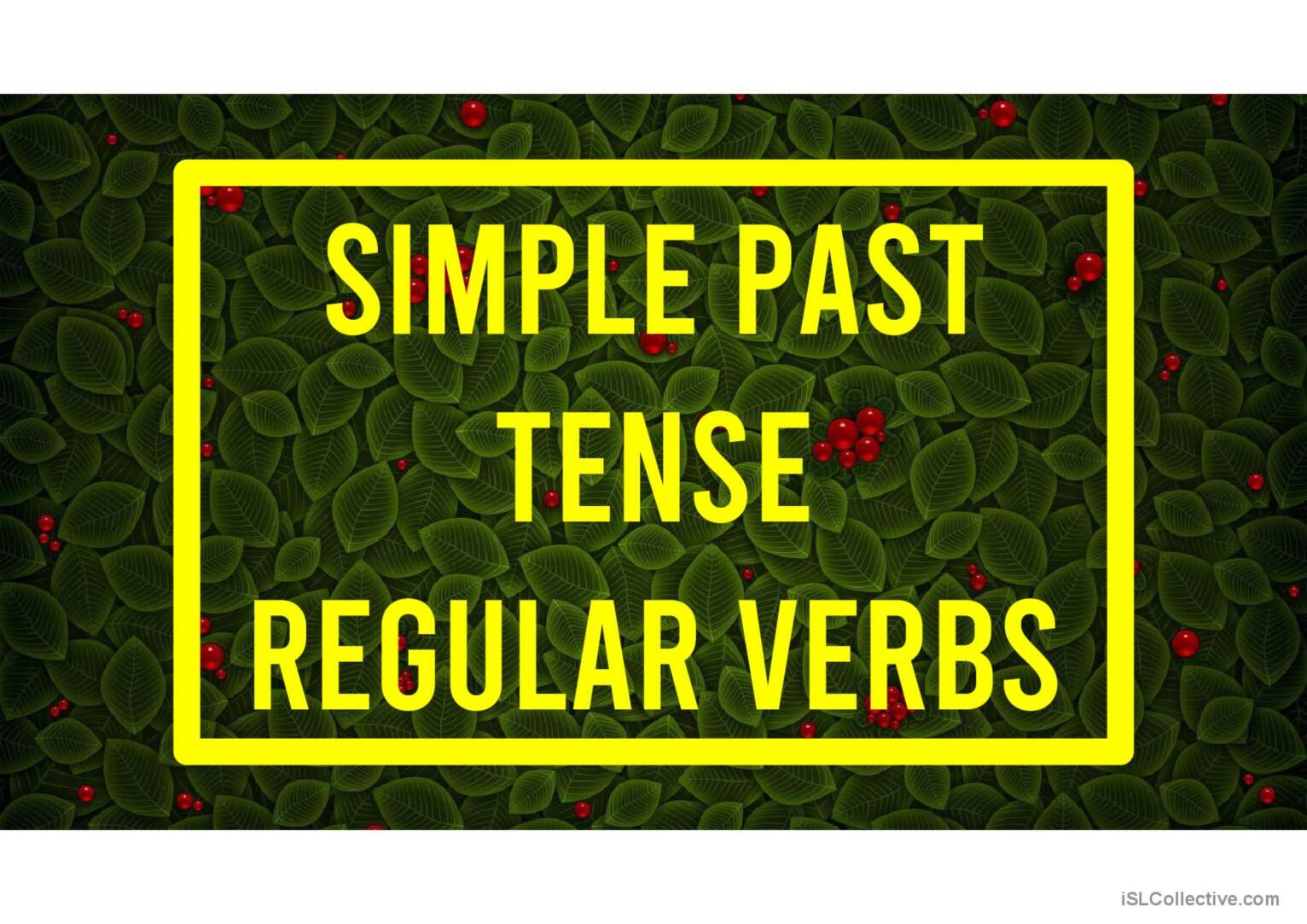Teaching the Past Simple of regular verbs can be rewarding. It allows students to talk about past events.
Introducing the Past Simple: Regular Verbs
Start by explaining the Past Simple's core function. It describes completed actions in the past. Provide clear examples, such as "I walked to school yesterday".
Focus on regular verbs. These verbs form the Past Simple by adding "-ed" to the base form. Highlight this simple rule with several examples.
The "-ed" Rule and its Variations
The basic rule is adding "-ed". However, there are variations to consider. This includes verbs ending in "e" and verbs with a short vowel sound followed by a consonant.
For verbs ending in "e", simply add "-d". For example, "love" becomes "loved". Practice with verbs like "dance," "bake," and "smile."
For verbs with a short vowel sound followed by a consonant, double the consonant before adding "-ed". The verb "stop" becomes "stopped". Ensure students understand the concept of short vowel sounds. Verbs like "plan," "drop," and "rob" follow this rule.
Common Misconceptions
Students often struggle with irregular verbs. It's essential to differentiate clearly between regular and irregular verbs. Emphasize that regular verbs always follow the "-ed" rule.
Another common mistake is forgetting to double the final consonant. Provide ample practice with verbs that require consonant doubling. Dictation exercises can be helpful in reinforcing this rule.
Pronunciation of the "-ed" ending can also be challenging. Some "-ed" endings sound like /t/, some like /d/, and some like /ɪd/. Practice with minimal pairs to highlight these differences. Consider using audio resources to demonstrate correct pronunciation.
Teaching Strategies
Use visual aids to explain the rules. Charts showing verb forms and pronunciation guides can be beneficial. Visual aids help students grasp the concepts more effectively.
Incorporate games and activities. Interactive exercises can make learning grammar more fun. Consider using online resources or creating your own games.
Role-playing scenarios can be very engaging. Students can act out past events, using the Past Simple to describe their actions. This helps them contextualize the grammar point.
Making it Engaging
Use personal stories. Share anecdotes about your own past experiences. Students are more likely to remember grammar points when they are connected to personal narratives.
Relate the Past Simple to topics students are interested in. This could include movies, music, or sports. Use these topics to create relevant examples and exercises.
Incorporate technology into your lessons. Online quizzes, interactive exercises, and videos can enhance student engagement. Use platforms that provide instant feedback and track student progress.
Quiz Design Considerations
Design your quiz to assess understanding of the "-ed" rule. Include a variety of question types, such as fill-in-the-blanks, multiple-choice, and sentence construction.
Provide clear instructions and examples. Ensure students understand what is expected of them. Confusing instructions can lead to unnecessary errors.
Include verbs with different variations of the "-ed" rule. This will help you assess whether students have mastered the nuances of the rule. Mix simple verbs with those requiring consonant doubling.
Consider including a section on pronunciation. Ask students to identify the correct pronunciation of "-ed" endings. This can be done through audio clips or written phonetic transcriptions.
Offer opportunities for feedback and review. Go over the quiz with your students, explaining the correct answers and addressing any misconceptions. Use the quiz as a learning opportunity.
Beyond the Quiz: Reinforcing Learning
Assign writing activities that require students to use the Past Simple. This could include writing diary entries, short stories, or summaries of past events. Regular writing practice reinforces grammar concepts.
Encourage students to use the Past Simple in their conversations. Create opportunities for students to talk about their past experiences with each other. Pair work and group discussions can be beneficial.
Provide ongoing feedback and support. Correct errors gently and provide clear explanations. Encourage students to ask questions and seek clarification. Positive reinforcement and encouragement can boost student confidence.
Example Quiz Questions
Fill in the blank: Yesterday, I ________ (walk) to the park.
Choose the correct form: He ________ (play, played, playing) football last week.
Correct the sentence: She dance at the party.
Write a sentence using the Past Simple of the verb "stop".
How is the "-ed" in "walked" pronounced?
By implementing these strategies, you can effectively teach the Past Simple of regular verbs. You can also help students master this essential grammar concept. Remember to be patient, supportive, and creative in your approach.

